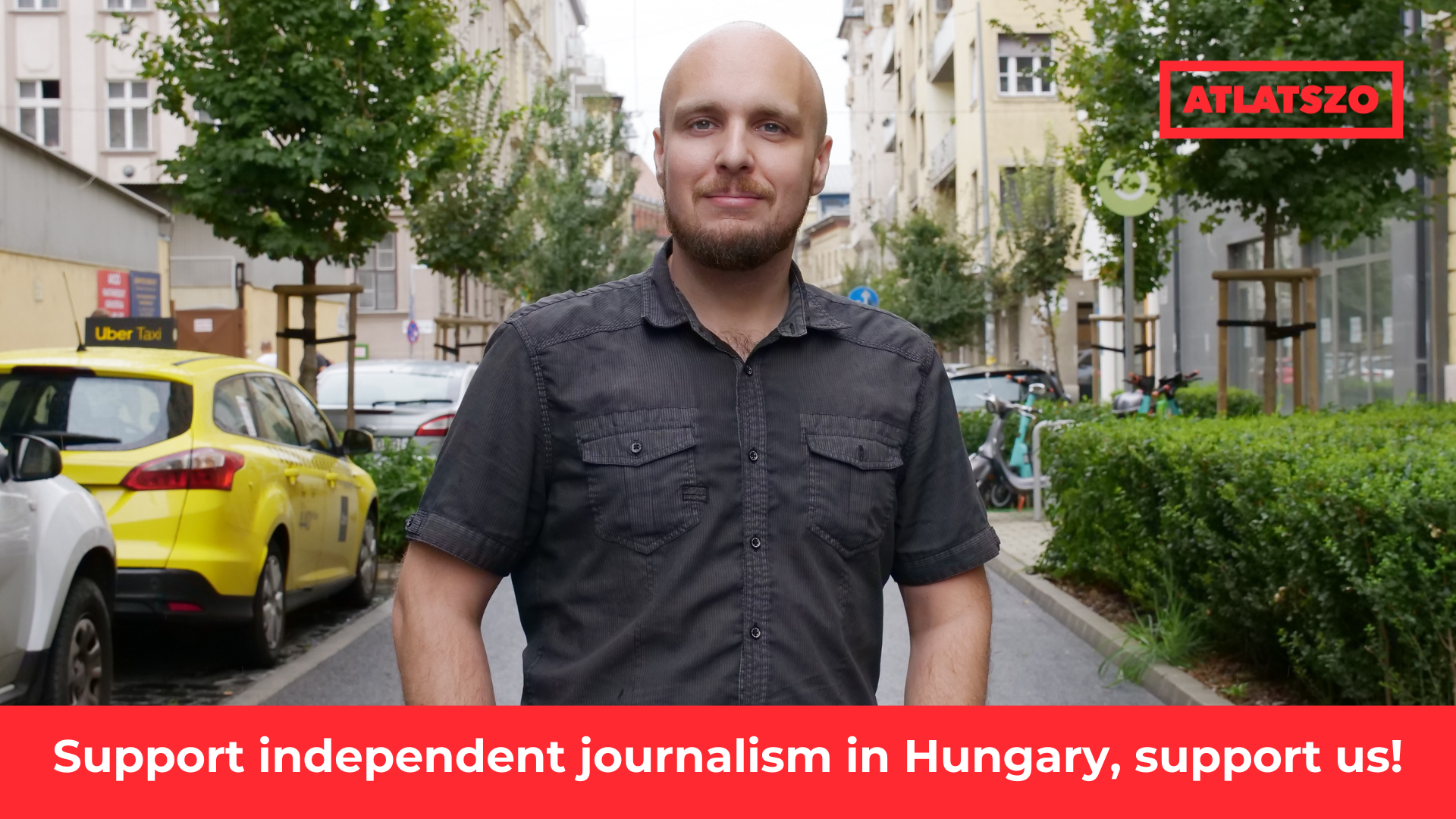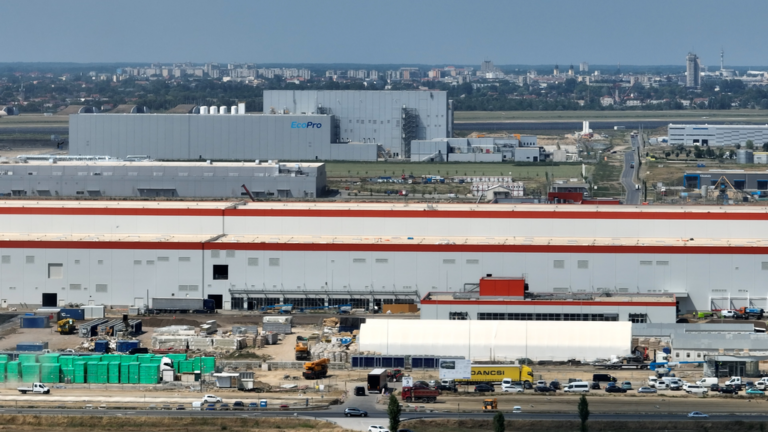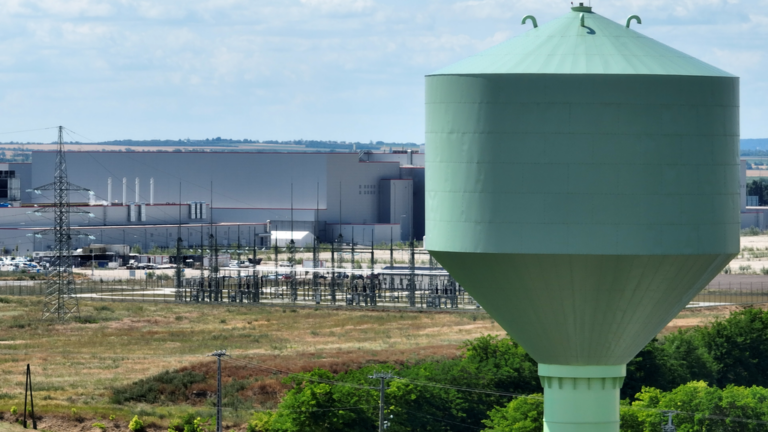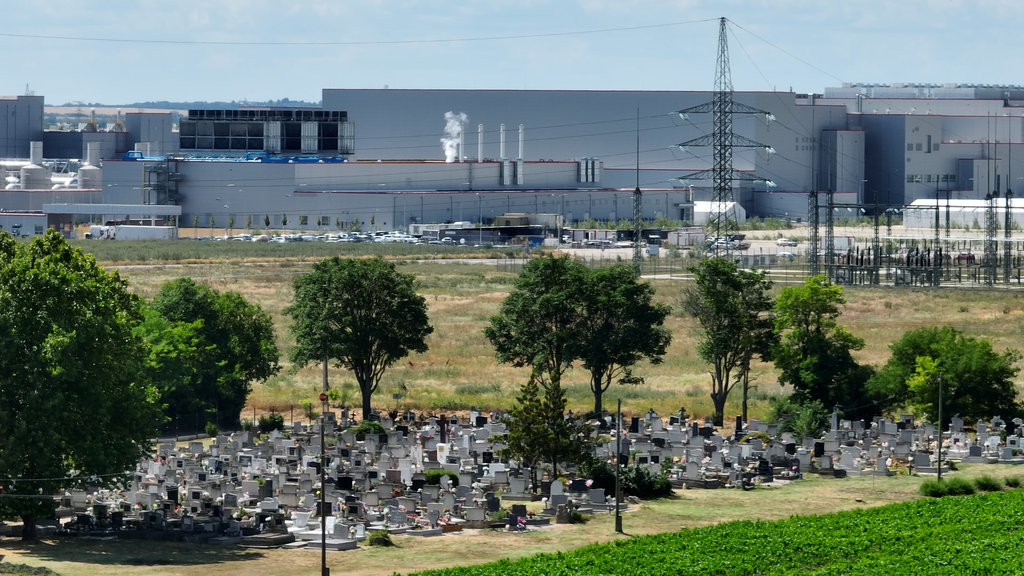The https://english.atlatszo.hu use cookies to track and profile customers such as action tags and pixel tracking on our website to assist our marketing. On our website we use technical, analytical, marketing and preference cookies. These are necessary for our site to work properly and to give us inforamation about how our site is used. See Cookies Policy
While the public water network is falling apart, government spends billions to supply water to battery factories
The Hungarian government is investing hundreds of millions of Euros to build the infrastructure of domestic battery factories, including their water utility upgrades. Meanwhile, there is not enough money for the long overdue complete renewal of the residential water network, even though pipe bursts are common and water restrictions are expected due to drought. We took a look at how water projects carried out by Mészáros and Mészáros Zrt. are progressing in Göd, Iváncsa and Debrecen, the sites of the largest Hungarian battery factories.
In recent weeks, there have been several reports of extreme failures due to the ageing of the residential water network – for example, in and around Nyergesújfalu, residents were left without water for days due to repeated pipe bursts, while in Dunakeszi, water supply was also interrupted due to a series of pipe bursts. The drought is also causing problems in water supply; experts say that the persistent water shortage is one of Hungary’s most serious problems, but there is still no state concept to solve it. However, the battery factories built by Asian companies, which require large amounts of water, do not have to worry about water shortages.

We recently wrote that the cost of developing the water utility at the Göd battery factory has risen over the years to over 86 million Euros. The investment, which is being carried out by Mészáros & Mészáros Zrt., the flagship company of oligarch Lőrinc Mészáros, will provide up to 27,000 cubic metres of water per day for the industrial area of Göd – although the Samsung factory’s environmental permit only includes a part of this amount, 7,500 cubic metres of water per day.
Residential pipes burst frequently
Not only have the wells, which have been closed for 50 years, been reopened, but a surface water intake has also been set up. Meanwhile, the local government had little say in the process of the gigantic water project on the Danube bank in Sződliget, Béla Juhász, mayor of Sződliget, told Átlátszó. That is because the area is under the jurisdiction of another town, Vác, and is owned by the Danube Regional Waterworks (DMRV).
Juhász criticized the decision to install an environmentally damaging, high-consumption industrial plant near the settlements of Göd, Sződliget and Vác, which are also considered the gateway to the Danube Bend (Dunakanyar), a region renowned for its scenic natural landscapes and (at least for now) a popular touristic destination.
He added that that while such a large-scale water utility project is being built for the sake of the battery factory in Göd, pipe bursts are occurring every month in Sződliget.
“It breaks my heart that, after we finally pave a road, a pipe bursts in the run-down water network and we have to pick up the freshly laid asphalt,” complains Béla Juhász. He also says it is strange and worrying that a water intake plant has been built just 700 metres south of the Vác sewage plant, where industrial waste water is discharged into the Danube.
10,000 cubic metres of water per day
The Mészáros family has benefited not only from the Göd factory but also from other battery investments, including the water development of the SK ON battery factory in Iváncsa, which is being carried out by Lőrinc Mészáros’ company for HUF 39.5 billion.
The project included the construction of a 10 km long drinking water pipeline between Ercsi and Iváncsa, a condition survey of 19 coastal filtered wells in the Ercsi water base and the construction of 6 new wells. Thus, according to a new permit from 2024, the daily extraction capacity of the water base, which was previously 8,000 cubic metres, has almost quadrupled to 31,000 cubic metres.
According to the decision authorizing the construction of the drinking water pipeline, “the battery plant’s water demand is 10,000 m3 /day, and the employment created by the plant is expected to lead to an increase in population, which could result in an additional 2,000-3,000 m3 /day”. And although the construction of the pipelines also affected Natura 2000 sites, the authority did not require an environmental permit for the project.
At least the village is spared from pollution
The cost of treating and discharging the 4,000 cubic metres of wastewater generated daily by the plant has increased from the originally planned 7.3 billion to nearly 10 billion. The increase in costs is due to the fact that, as previously reported, the authority decided that the wastewater should be discharged into the Danube drift line rather than into the Cikola watercourse, as originally planned. However, according to our information, this part of the pipeline under the Danube has not yet been completed.
Costs were also increased by the construction of a temporary wastewater treatment plant at a cost of 3,76 million Euros until the new wastewater treatment plant is ready to start operations. However, the nearby municipalities are luckier in that 25 kilometres of
public drinking water improvements have also been carried out with state and EU funding – also by the Mészáros family enterprise at a cost of 32,6 million Euros.
According to Jácint Ágoston, a member of the Iváncsa council, the municipality receives little information on the operation of the battery factory and related construction works. But for the last month they have noticed that the plant has hardly been operating, with the chimneys and cooling towers emitting almost no visible water vapor or smoke. Not that the locals mind this, since the factory is built so close to Iváncsa that the whole village is within the plant’s air pollution zone.
Another Mészáros-project
Mészáros and Mészáros Zrt. is also very active in Debrecen, Hungary’s second-largest city, and its surroundings, and has won several water contracts. The local pro-regime news site Haon.hu reported last autumn that “the largest water utility development in the country is under way”.
In a decree published in April 2023, the government has allocated a total of 272.5 billion Euros for water developments serving industrial plants and the population in Debrecen. That is, this amount would be used not only to renew and expand the city’s water network and wastewater treatment plant, but also to carry out water-related developments in industrial zones.
This would include the construction of the sewerage pipelines for the CATL battery plant, the EcoPro cathode plant and the Semcorp separator film plant in the southern economic zone, and an increase in industrial wastewater treatment capacity. In addition, new pipelines would be built in the north-western economic zone, where the BMW factory is currently under construction, and the capacity of the nearby Balmazújváros waterworks, which is part of the Eastern Main Canal, would be increased.
It is promised that the developments will also allow the use of “grey water” from wastewater treatment for industrial plants, but no concrete information on the technology has been released.
The waterworks investments were originally due to be completed by 2026, but the revised government decision now includes the cost by 2028. The Eastern Main Canal Surface Water Treatment Plant Development has not yet started, we wrote last October, as the tender for the project was unsuccessful.
Natural sites may be left without enough water
After Átlátszó reported on the failed public procurement, the government issued a statement last November saying it would call for a new tender for the failed project – but so far this has not happened. The Debrecen municipality also issued an indignant statement saying that the water utility developments in Debrecen are proceeding at the “right pace”.
It lists all the planned investments that have already been completed: the water pipeline linking the Keleti main canal water treatment plant and Hajdúnánás was completed – the 42,6 million-Euro-project, built with EU and state funds was carried out by Mészáros and Mészáros Zrt.

CATL’s battery factory under construction and EcoPro’s cathode plant in the Southern Economic Belt in Debrecen.
The first phase of the Civaqua programme was also completed in 2023, and 36.8 million Euros of public and EU funding was used to revitalize the Tócó watercourse west of Debrecen. However, the second phase of the Civaqua program – which would bring 38.6 million cubic metres of water per year from the Keleti main canal to Debrecen for irrigation and to ensure the water supply of the ponds in Erdőspuszta and the Nagyerdő – has not yet started due to the freezing of EU funds.
It is not yet clear how the water supply will be ensured to meet the needs of both the industrial plants and the population, says Dr István Fábián, professor of chemistry at the University of Debrecen.
“Who would have thought before that it would be possible to cross the Tisza with a foot in the upper reaches? And since the Eastern Main Canal draws its water from the Tisza, this could also mean that the amount of water that can be used could be limited. Because
it’s not a question of how much water is available, but how much can be taken out.”
– the professor told Átlátszó.
Our video report on the water projects can be watched in Hungarian here:
In February this year, independent local news portal debreciner.hu reported that a maximum of around 1,900 cubic metres per day of dilution water would be provided for the plants in the north-western economic zone, home to the EVE Power battery plant and the BMW plant, and a maximum of around 5,500 cubic metres per day in the southern economic zone, home to other battery industry projects alongside the CATL battery plant. Water permits have already been issued for this purpose.
Citing the local government of the nearby town Hajdúböszörmény, the local news portal also reported that the companies will be supplied drinking water-quality water. Although the Debrecen city administration and Debrecen Vízmű Zrt. did not describe it in this way, they said that “the outgoing water will be of the quality required by Government Decree 5/2023 (I.12.)” – a government decree on the quality requirements for drinking water and the monitoring procedure.
Debreciner calculated that the annual water demand of industrial plants under the battery factory permits
will exceed the annual water needed to save two natural spots outside of Debrecen, the Great Forest (Nagyerdő) and Erdőspuszta lakes.
But there is also the question of who will get the extra water from the Tisza first: the water-guzzling battery factories or the Great Forest of Debrecen and the lakes, whose survival is threatened by drought?
Written by Zsuzsa Bodnár, video by Gergely Pápai, translated by Zalán Zubor. The original Hungarian story can be found here. Cover photo by Gergely Pápai. Supported by Journalismfund Europe.


